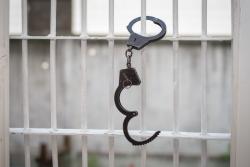
Police and prosecutors face a range of challenges while investigating, prosecuting and, ultimately, attempting to secure a conviction for human trafficking and slavery offences in Australia. In this study, investigation and prosecution data were analysed to chart the progression of matters and identify reasons for attrition. Analysis revealed an overall prosecution attrition rate of 73 percent. Attrition was most evident during the initial phases of prosecution, when the decision to lay charges was being considered. However, there was a 60 percent chance of conviction as a result of the defendant either pleading or being found guilty.
Defendants were more likely to be convicted for ancillary charges (eg migration offences) than the most serious charges of human trafficking and slavery. The prosecution attrition rate for the most serious charges was 80 percent, compared to 54 percent for lesser charges.
References
Australian Federal Police (AFP) 2019. Annual report 2018–19. https://www.afp.gov.au/annual-report-2018-19
Australian Federal Police (AFP) 2016. The case categorisation & prioritisation model: Guidance for AFP clients. https://www.afp.gov.au/what-we-do/operational-priorities/case-categorisation-and-prioritisation-model
Australian Red Cross 2013. Human trafficking in Australia: Frequently asked questions. https://www.redcross.org.au/getmedia/c25b6d6e-e52c-464a-92bf-8afc79c3836f/Trafficking-FAQs.PDF.aspx
Bales K & Lize S 2007. Investigating human trafficking: Challenges, lessons learned, and best practices. FBI Law Enforcement Bulletin 76(4): 24–32
Commonwealth Director of Public Prosecutions (CDPP) 2014. Prosecution policy of the Commonwealth: Guidelines for the making of decisions in the prosecution process. Canberra: Australian Government. https://www.cdpp.gov.au/prosecution-process/prosecution-policy
Commonwealth Director of Public Prosecutions (CDPP) nd. Partner agencies. https://www.cdpp.gov.au/partner-agencies
Clawson HJ, Dutch N & Cummings M 2006. Law enforcement responses to human trafficking and the implications for victims: Current practices and lessons learned. Washington: US Department of Justice
Clawson HJ, Dutch N, Lopez S & Tiapula S 2008. Prosecuting human trafficking cases: Lessons learned and promising practices. Washington: US Department of Justice
David F 2008. Prosecuting trafficking in persons: Known issues, emerging responses. Trends & issues in crime and criminal justice no. 358. Canberra: Australian Institute of Criminology. https://www.aic.gov.au/publications/tandi/tandi358
David F 2007. Law enforcement responses to trafficking in persons: Challenges and emerging good practice. Trends & issues in crime and criminal justice no. 347. Canberra: Australian Institute of Criminology. https://www.aic.gov.au/publications/tandi/tandi347
Davy D 2016. Justice for victims of human trafficking in Australia? Issues associated with Australia’s criminal justice response to trafficking in persons. Contemporary Justice Review 20(1): 115–31. https://doi.org/10.1080/10282580.2016.1262773
Department of Social Services 2019. Extend the Support for Trafficked People program. https://plan4womenssafety.dss.gov.au/initiative/extend-the-support-for-trafficked-people-program/
Farrell A et al. 2012. Identifying challenges to improve the investigation and prosecution of state and local human trafficking cases. Washington, DC: National Institute of Justice
Farrell A, McDevitt J & Fahy S 2008. Understanding and improving law enforcement responses to human trafficking: Final report. Human Trafficking Data Collection and Reporting Centre Research and Technical Reports. Boston: Northeastern University
Farrell A, Owens C & McDevitt J 2014. New laws but few cases: Understanding the challenges to the investigation and prosecution of human trafficking cases. Crime, Law and Social Change 61: 139–68. https://doi.org/10.1007/s10611-013-9442-1
Gallagher AT & Karlebach N 2011. Prosecution of trafficking in persons cases: Integrating a human rights-based approach in the administration of criminal justice. Background Paper. United Nations Human Rights Office of the High Commissioner. https://www.ohchr.org/EN/Issues/Trafficking/Pages/meetingProsecutionTrafficking.aspx
Interdepartmental Committee on Human Trafficking and Slavery 2020. Trafficking in Persons. The Australian Government Response 1 July 2016 – 30 June 2017. The Ninth Report of the Interdepartmental Committee on Human Trafficking and Slavery. Canberra: Commonwealth of Australia. https://www.homeaffairs.gov.au/about-us/our-portfolios/criminal-justice/people-smuggling-human-trafficking/human-trafficking
Joudo Larsen J, Renshaw L, Gray-Barry S, Andrevski H & Corsbie T 2012. Trafficking in persons monitoring report: January 2009 – June 2011. Monitoring report no. 19. Canberra: Australian Institute of Criminology. https://aic.gov.au/publications/mr/mr19
Matos M, Gonçalves M & Maia A 2019. Understanding the criminal justice process in human trafficking cases in Portugal: Factors associated with successful prosecutions. Crime, Law and Social Change 72: 501–25. https://doi.org/10.1007/s10611-019-09834-9
Matos M, Gonçalves M & Maia A 2017. Human trafficking and criminal proceedings in Portugal: Discourses of professionals in the justice system. Trends in Organized Crime 21: 370–400. https://doi.org/10.1007/s12117-017-9317-4
McDonald WF 2014. Explaining the under-performance of the anti-trafficking campaign: Experience from the United States and Europe. Crime, Law and Social Change 61:125–138. https://doi.org/10.1007/s10611-013-9511-5
National Rapporteur on Trafficking in Human Beings 2012. Case law on trafficking in human beings 2009–2012: An analysis. The Hague: BNRM. https://www.dutchrapporteur.nl/publications/reports/2013/04/26/case-law-on-trafficking-in-human-beings-2009-2012-interactive
Nguyen OV, Le TQ & Luong HT 2020. Police failure in identifying victims of human trafficking for sexual exploitation: An empirical study in Vietnam. Journal of Crime and Justice. https://doi.org/10.1080/0735648X.2020.1724816
Renshaw L, Kim J, Fawkes J & Jeffreys E 2015. Migrant sex workers in Australia. Research and public policy series no. 131. Canberra: Australian Institute of Criminology. https://www.aic.gov.au/publications/rpp/rpp131
Schloenhardt A, Astill-Torchia P & Jolly JM 2012. Be careful what you pay for: Awareness raising on trafficking in persons. Washington University Global Studies Law Review 11(2): 415–35
Simmons F, O’Brien B, David F & Beacroft L 2013. Human trafficking and slavery offenders in Australia. Trends & issues in crime and criminal justice no. 464. Canberra: Australian Institute of Criminology. https://www.aic.gov.au/publications/tandi/tandi464
United Nations Global Initiative to Fight Human Trafficking (UN.GIFT) 2008. From protection to prosecution – A strategic approach: A victim centred approach as a key to increasing the effectiveness of criminal justice responses to human trafficking. Vienna: UN.GIFT
United Nations Office on Drugs and Crime (UNODC) 2021. Global report on trafficking in persons 2021. Vienna: UNODC. https://www.unodc.org/unodc/data-and-analysis/glotip.html
United Nations Office on Drugs and Crime (UNODC) 2018. Global report on trafficking in persons 2018. Vienna: UNODC. https://www.unodc.org/unodc/en/data-and-analysis/glotip.html
United Nations Office on Drugs and Crime (UNODC) 2017. Evidential issues in trafficking in persons cases: Case digest. Vienna: UNODC
United Nations Office on Drugs and Crime (UNODC) 2016. Global report on trafficking in persons 2016. Vienna: UNODC. https://www.unodc.org/unodc/data-and-analysis/glotip.html
United Nations Office on Drugs and Crime (UNODC) 2008. Toolkit to combat trafficking in persons. Vienna: UNODC. https://www.unodc.org/unodc/en/human-trafficking/2008/electronic-toolkit/electronic-toolkit-to-combat-trafficking-in-persons---index.html
Wilson JM & Dalton E 2008. Human trafficking in the heartland: Variation in law enforcement awareness and response. Journal of Contemporary Criminal Justice 24(3): 296–313. https://doi.org/10.1177/1043986208318227